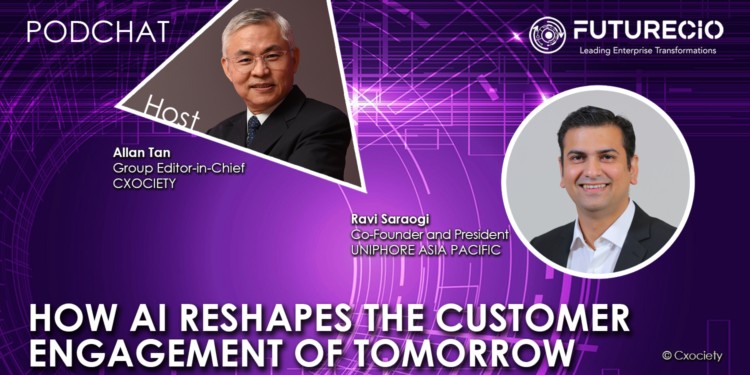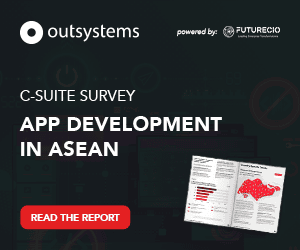Despite the many challenges facing the world, Technavio forecasts that the contact centre market will by US$250.47 billion during 2021-2025, grow at a CAGR of 11%.
Many businesses will go through response, recovery, and renewal phases. Building business resilience and enabling agility will aid organizations to move forward in their journey out of the COVID-19 crisis towards the Next Normal, said the analyst.
Ravi Saraogi, co-founder and president for Uniphore Asia-Pacific, noted that for years, the contact centre has operated largely confined in a single building where things were end-to-end secured from people, network and process perspective.
He reckoned the pandemic changed the thinking, forcing many to have agents work from home (WFH), and testing the ability of contact centres to continue operating in much the same process as in the past, albeit taking advantage of technologies that would facilitate operating remotely, more efficiently and with continued confidence.
In the report, Digitization and Cloud Migration Transforming Asia-Pacific Contact Center Applications Market, Forecast to 2026, Frost & Sullivan says COVID-19 has accelerated the rate of migration from on-premise solutions to cloud-based services, given the need to provide outstanding customer experience (CX) remotely.
Emerging technologies like artificial intelligence (AI) and machine learning (ML) are anticipated to also shape how contact centre agents engage with customers, by providing real-time feedback, predictive analytics, and in-depth analysis.
AI is enhancing the customer experience while improving the lives of call centre employees.
Saraogi opined that the idea of achieving a fully AI-powered contact centre should, however, not be thought of as an end goal.
“AI is a part of a much larger, bigger picture, meant to power the entire front end and back end operations to augment the capabilities and productivity of employee experience today from agent side and customer experience – from the customer side. So, that is how probably, in my opinion, COVID has impacted the overall contact centre industry pre and post-pandemic,” he continued.
Trends in Asia’s contact centre practice
Frost lists four trends helping fuel the growth in the industry:
- New Tech: Introducing new technologies such as predictive analytics and machine learning to enhance capabilities, add value, and remain competitive.
- Integration: Encouraging contact centres to integrate systems and apps outside the contact centre to support digital transformation strategies.
- Richer experience: Offering rich and easy-to-use contact centre analytics capabilities as enterprises increasingly source end-to-end analytics solutions for their business needs.
- Overcoming restrictions: Providing WFH solutions, AI-enabled bots, Robotic Process Automation (RPA), and automation tools as contact centres are compelled to increasingly invest in advanced tools to manage the fallout from the COVID-19 pandemic.
“AI-driven capabilities can deliver real-time insights, guidance, and real-time automation of all the repetitive tasks that an agent has to do today while they are executing their cause,” said Saraogi.
He added that the benefit of bringing in a platform that is powered by AI is to truly create an intent-enabled action by the system and use that information to support the agent to carry out a conversation.
No displacement of agents
He clarified that these platforms and technologies should not be seen as a threat to contact centre agents.
“We are not here looking for an approach and a platform which is going to replace the agent. What we believe is that, in a time of need, when a customer calls an agent, they are looking for someone to listen to them, with empathy, and provide a response back."
Ravi Saraogi
“If we can power our AI to co-pilot with the agent and support them through this conversation, that's the best of both worlds that are coming together to support the customer in their process,” he continued.
Persistent siloed operations
Like many other established processes, contact centre operations are undergoing some form of transformation as business leaders look to improve the customer experience (CX) journey. A persistent FutureCIO discussion is how AI can enhance the CX journey while also improving employee satisfaction.
Saraogi believed that AI should aim to empower customer journeys, make efforts, and employee training. While all these new technologies are up for grabs, it is also important that organisations lab this up in a way where it is ingrained into an overall process of their larger vision.
“For an organisation to take this forward, it is important for them to visualise how they see themselves as a business, how they want their consumers to interact with them in the course of the next one year, two years, three years and five years from now, and then build a holistic strategy,” he continued.
Saraogi lamented the siloed state-of-affairs at enterprises leading to decisions being taken in silos. He believed that the adoption of any technology, including AI, to be a holistic decision that is taken organisation-wide.
“There are multiple different functions within each of these large enterprises, and it has to be a holistic approach as an organisation comes together. How do they visualise their process three years from now? How do they want their customers to interact with them? What kind of experiences do they want to provide? All of that must be taken into a holistic manner,” he suggested.
Click on the PodChat player above and listen to Saraogi as he details important trends shaping the contact centre industry in Asia during the COVID-19 pandemic.
1. Briefly describe the evolution of contact centres in Asia Pacific pre- and post-COVID-19?
2. What are the key findings from Uniphore’s recent COVID-era survey that outlines opportunities and challenges faced by contact centre agents?
3. How can data and AI-driven capabilities improve the overall experience before, during and after calls?
4. How should leadership priorities their investment strategies as regards the contact centre and customer engagement?




